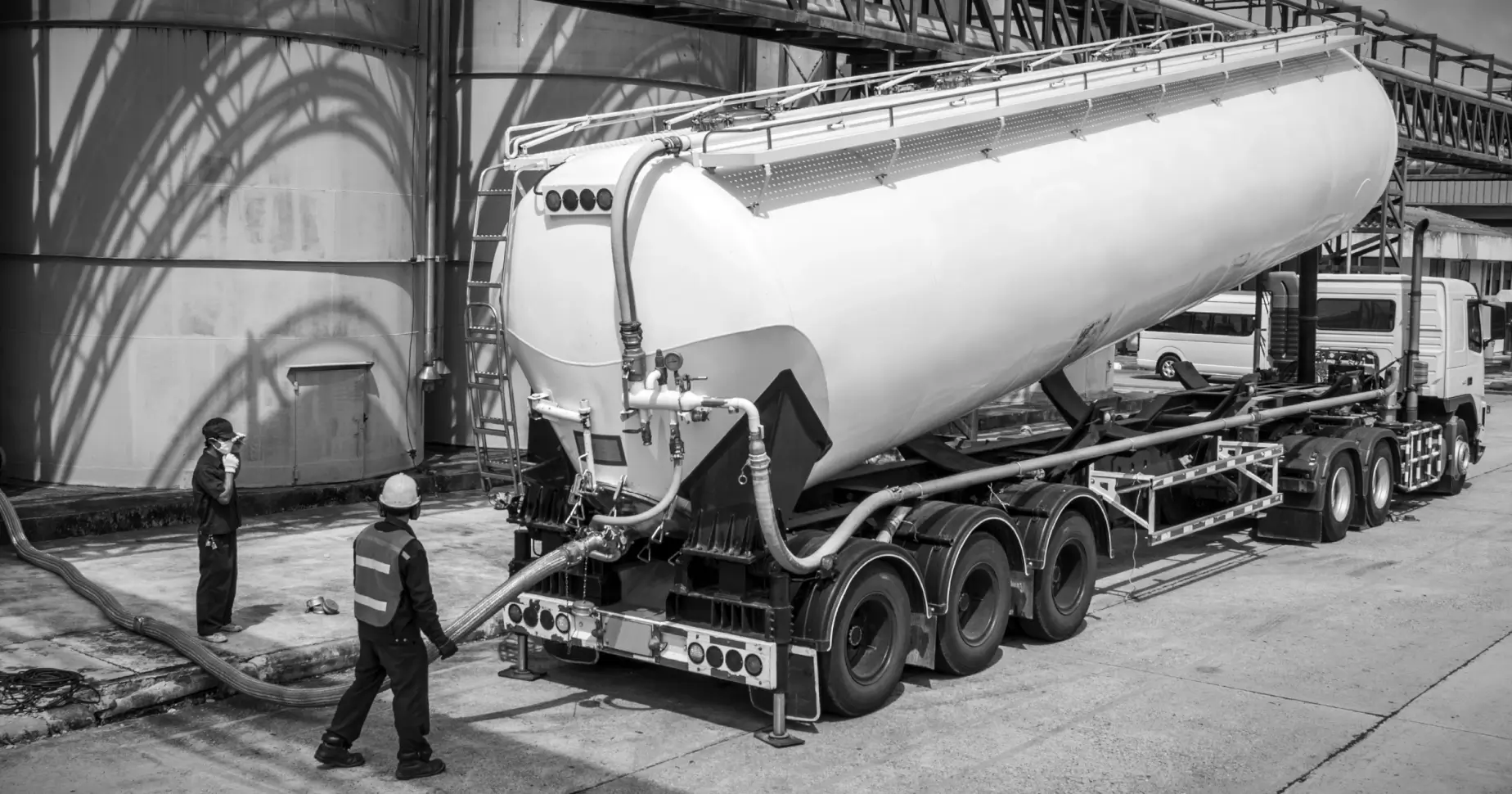Proper route optimization can help you save about 20% of your fleet running costs. A vehicle faces many disturbances when it’s on the road. These problems include traffic jams, road closures, adverse weather conditions, and construction zones along the route. A fleet of vehicles encountering such hurdles on the road burns more fuel due to increased idling and delays caused by these obstacles. Delivery agents or companies may also miss or delay important customer deliveries.
As a fleet owner, you can avoid this with effective route planning and optimization.

Route planning means identifying and mapping out your vehicles’ safest and most efficient routes before they head out for deliveries or other operations. Route planning is beneficial for fleet businesses because it helps improve transportation accuracy. It also reduces fuel consumption, boosts productivity, and enhances customer satisfaction.
Components of Route Planning in Fleet Management
When you decide to analyze and track the best routes for your fleet, you must take into account the following key components:
● Vehicle and Driver Assignment
Vehicle selection is a basic requirement for formulating an effective route for your fleet. You must ensure that the vehicles you add to your fleet for business operations have the necessary efficiency and power to handle a particular route. For example, if you want to transport heavy equipment, choose a vehicle that has the power to carry the load with ease.
Equally important is having trained drivers. A fleet manager must analyze the rest breaks, shift times, and the number of deliveries assigned to each driver based on their skill level. You must give your drivers enough time to complete their routes without exhaustion. A driver must be well-rested because such fatigue can cause accidents.
● Route Optimization
Route optimization is all about planning the most efficient paths for fleet vehicles. It involves analyzing geographical locations, traffic conditions, and road closures. Fleet managers should optimize routes and calculate the shortest truck routes to save fuel and time, especially for multiple stops. It’s also important to stay updated on any changes along your fleet’s routes. It will help you avoid delays caused by unexpected traffic, ensuring quick and safe delivery services.
● Fuel Efficiency
Fuel efficiency is a major consideration in route planning. Advanced route optimization can help businesses create the least-cost routes for fuel savings. Fleet operators can minimize the distance traveled and reduce fuel consumption by identifying shorter and safer routes for their operations. Effective route planning allows drivers to maintain a consistent speed, reducing fuel consumption since they don’t have to stop frequently or deal with unnecessary idling on the road.
● Safety and Compliance
Route planning must prioritize safety and compliance. Traffic and road conditions can impact travel time and fuel usage. Identify problems using Google Maps truck routes and ensure your fleet’s and drivers’ safety. You must also ensure that drivers take the required breaks and naps. Ensure the routes comply with driver hours and break regulations so your fleet stays on track legally and safely.
What are the Benefits of Route Planning?
The following are some important benefits of route planning:
● Cost Reduction
Route planning and optimization help fleet companies lower fuel consumption and reduce costs. It enables them to find the shortest and most efficient vehicle routes. These routes reduce unnecessary stops and save fuel. Effective route planning also cuts maintenance and repair expenses since vehicles avoid excessive wear and tear by traveling on safer, shorter routes.
● Improved Delivery Times
The truck drivers in a fleet company can easily minimize delays and late deliveries by analyzing route conditions and planning the best route to their destination. They can accurately gauge their estimated time of arrival (ETA) and inform their customers to build trust and improve satisfaction. This ensures consistent and timely customer deliveries, improving the company’s reputation.
● Enhanced Driver Productivity
The best route planners for trucks appeal to drivers by helping them avoid hurdles such as traffic jams or unnecessary stops. Drivers can handle more tasks in a shorter time, ultimately improving fleet efficiency. When drivers know their routes are safe and smooth to navigate, their stress decreases, so they focus more on delivering better results.
● Environmental Impact
Optimized fleet routes also reduce the environmental footprint. Lower fuel consumption during fleet operations leads to fewer emissions, protecting the environment from harmful gases. In this way, route planning not only saves fuel but also supports environmental benefits by improving air quality. It’s a win-win for both your fleet and the planet.
Technologies Used in Route Planning
Fleet managers use different tools and technologies for effective route planning. Here are some crucial devices and software that you can use to plan your routes:
1. GPS and Telematics Systems
GPS and telematics systems help fleet managers track their vehicles and spot any issues that might come up on the road. Fleet managers use truck route GPS systems and telematics software to gather information about road conditions and choose the best routes to avoid delays. They can also keep an eye on each vehicle and make sure drivers stick to the planned routes.
2. Route Optimization Software
Route optimization software uses advanced algorithms to analyze delivery locations, traffic patterns, and other data. Fleet managers use these tools to find the best routes for each vehicle. Consider order volume, geographic coverage, fleet size, and delivery timing to determine which optimization tool will work best.
Moreover, route planning software integrates with other fleet management tools, such as GPS tracking systems, telematics, and maintenance software. They provide updates on traffic conditions, route changes, and vehicle performance.
3. AI and Predictive Analytics
AI has been playing a key role in innovating the tech world. Now, most software integrates AI tools to improve research and predictive performance. You can use AI to predict and avoid high-traffic areas by analyzing past patterns. AI can also provide weather forecasts that you can use to plan your transportation schedules.
Challenges in Route Planning
Route planning is not as simple as just opening Google Maps and seeing your transportation route. It’s a challenging process. Even companies with plenty of experience can overlook important considerations during route optimization.
Let’s go over some common challenges businesses might face in route management.
● Unpredictable Traffic and Road Conditions
We cannot always be right in our predictions. Some obstacles may arise unexpectedly, disrupting fleet operations. Unpredictable events, such as mechanical failures, accidents, or weather problems, can cause delays in fleet business. Traffic congestion and uncertain events, like protests, may also impact your delivery schedules. During peak hours, deciding on an alternative route in heavy traffic becomes even more difficult.
● Fuel Price Fluctuations
Fuel costs never remain the same throughout the year; there’s no guarantee they will stay consistent for even a week. Fluctuations in fuel prices can impact your route planning, as your fuel budget may fall short due to rising prices. This can reduce your profitability as you spend more on fuel. That’s why you should stay aware of market forecasts for future fuel prices and adjust your routes accordingly.
● Driver Resistance to Route Changes
Sometimes, drivers feel uncomfortable or frustrated when asked to follow new routes. To address this, you must involve them in the route planning process and highlight the new route’s benefits. Drivers may also find it difficult to use specific GPS and route planning software, so you’ll need to guide and train them on the software. Once they are comfortable with the technology and understand the reasoning behind the changes, they will ultimately accept the new routes and follow them as instructed.
Best Practices for Effective Route Planning
There needs to be more than the tools and technologies to plan and optimize routes for your fleet. You also need to adopt the right strategies and best practices to maximize efficiency in the route optimization process. Below are some best practices for effective route planning:
● Continuous Monitoring and Adjustment
The first and basic strategy you must follow is to evaluate and understand your fleet routes, then plan according to possible situations. Monitor your fleet’s routes in real-time with GPS and stay updated on traffic intensity. You can analyze live traffic reports and road conditions to adjust your routes accordingly.
● Collaborating with Drivers
Drivers are more aware of possible road conditions and can offer the best feedback. You should ask for their input on road conditions, traffic patterns, and any trouble spots they encounter. Together, you can figure out when and why to use free commercial truck route directions. It’s also important to ensure your drivers are trained and gain hands-on experience with GPS and different route-planning software.
● Leveraging Advanced Technologies
Another important tactic for effective route planning is the application of advanced technology. AI is one of the most widely used technologies in fleet management today. It can help predict traffic, weather, and road conditions.
You can also use telematics software to monitor driver behavior, vehicle performance, and traffic patterns, all of which improve efficiency.
Key Takeaways
Route planning can help take your business to new heights by reducing fuel costs, improving productivity, and enhancing customer satisfaction. We’ve already discussed the challenges you may face during fleet operations and highlighted the importance of using GPS tracking and various AI tools. To stay competitive and deliver a better experience for customers, make sure to never hesitate in using advanced, futuristic tools that will bring convenience to your business.
FAQs
How to do a route plan?
First, you must identify your destination. Then, use Google Maps or MapQuest to find the best route. You must keep a check on traffic updates and make sure to plan stops for fuel, rest, or deliveries along the way. You also need to review driving and safety regulations.
How do truckers know what route to take?
Truckers use different GPS devices, route-planning apps, and maps to navigate their routes. Some fleet companies also provide drivers with pre-planned routes with the safest and most efficient paths for each trip.
What is the easiest route planner?
The easiest route planner is one that’s simple to use and offers clear directions. Some popular, user-friendly options include Google Maps and TruckRouter, which is best for truck drivers and fleets.
What are the considerations of route planning?
You should consider the following crucial things when planning routes for your fleet:
- Decide the destination.
- Calculate the distance to estimate fuel consumption.
- Acknowledge time to manage schedules and travel time.
- Assess road conditions to avoid delays.
- Consider route restrictions and legal limits.
- Prioritize safety to protect drivers and cargo.
Make Route Planning Easy with Fuel Logic’s Fuel Delivery Services
Suppose you’ve mapped out the perfect route for your fleet, and everything is set for the journey. But then, you realize you don’t have enough fuel to complete the trip, and there may not be any gas stations on the way.
Here, Fuel Logic becomes your best companion.
We’ve helped numerous fleet companies, industries, and businesses with on-demand DEF, gasoline, and diesel fuel delivery services.
You can schedule fuel deliveries right to your business location or anywhere your fleet is operating. We make sure you never run out of fuel during a critical moment.
Partner with us to handle your fueling needs across the entire USA.
Order fuel via our website or contact us directly for bulk fuel deliveries.
Visit our site to learn more about how we can support your fleet.






